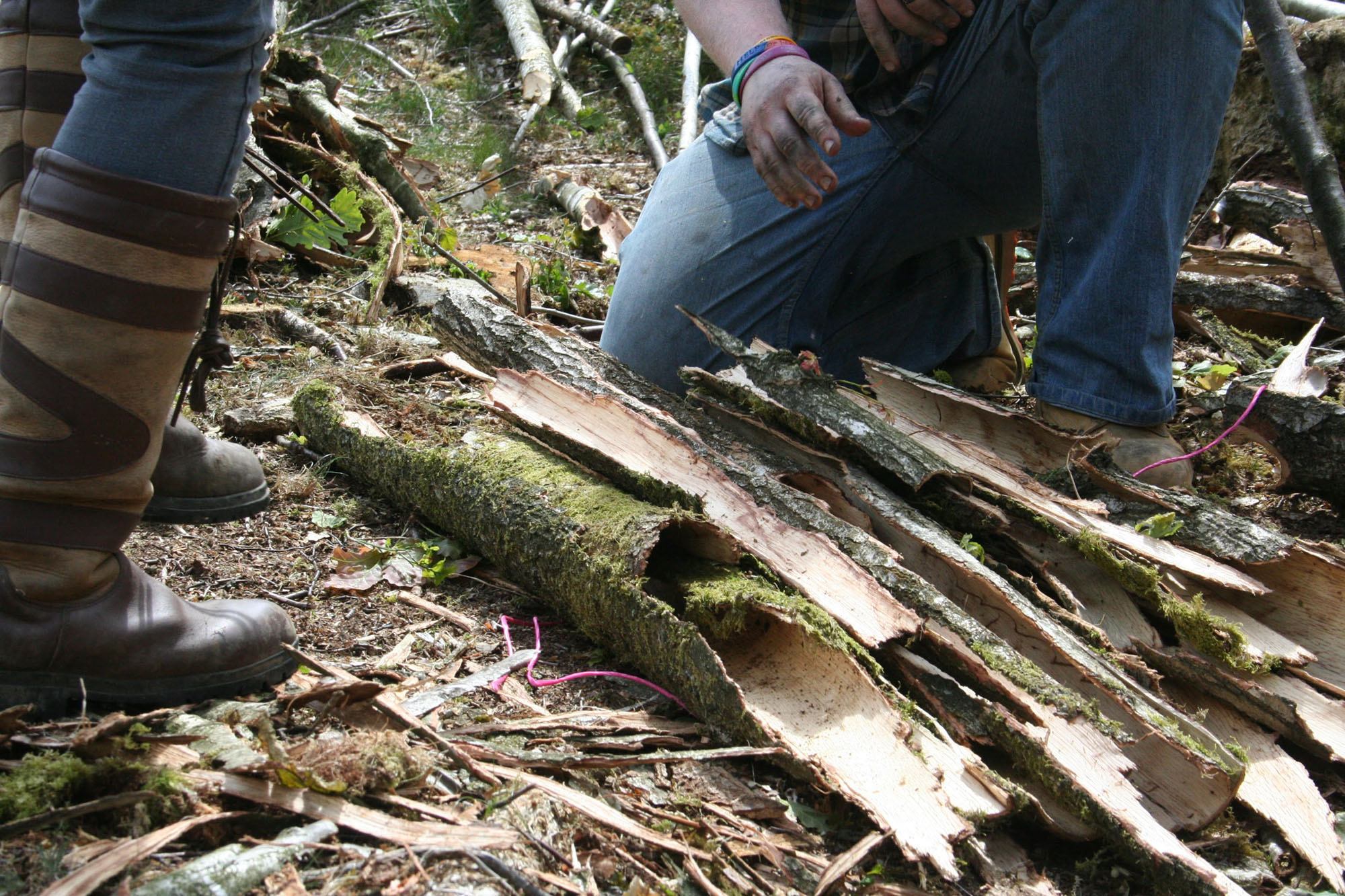
Words by Marcus Jaye
Photography © Duncan Goulder; Owen Jones; Kevin Wilson; Rachel Collins
If you go down to the woods today don’t be surprised to learn that you are surrounded by one of the British leather industry’s most fundamental resources. Follow your eye down from the rustling canopy, along the forest floor strewn with leaves and on to the nearest brutalist-looking tree trunk. You are now staring at an ingredient used in the UK’s leather industry for millennia.
The English oak – Quercus robur – is part of the magical mix in creating some of the world’s finest leathers. Oak bark has been utilised for thousands of years in the treatment and tanning process of leather.
Today, oak bark tanned leather is one of the most sought after and respected leathers in the world thanks to its rich patina and unforgettable smell – it is said to have an olfactory of old saddlery and/or leather shops.
The romantic Britishness of using oak as a foundation for quality leather resonates throughout the leather supply chain from wood to wardrobe and is the inspiration for many of the finished products. It produces a unique and highly desirable material much in demand from leather craftspeople and connoisseurs.
From little acorns mighty oaks grow, yet it is the smaller, coppiced shoots that best suit the oak bark tanning method. The precious oak bark continues to be harvested by dedicated woodworkers across Northern England and Wales and used by the last remaining UK tannery, J. & F.J. Baker & Co. Ltd., dedicated to this ancient way of tanning.
“Gone are the days when the very last stick in the area was coppiced.” says Rebecca Oaks, a Trustee of Bill Hogarth Memorial Apprentice Trust (BHMAT). Based in North Lancashire the aptly named ‘Oaks’ continues the legacy of Bill Hogarth who was one of the country’s foremost coppicers, generously sharing his time and knowledge.
The oak bark used is taken from coppiced oaks – meaning they are cut regularly – because the younger shoots contain far more tannings. The bark is usually a by-product from traditional woodworking and forestry management. Fortunately, stately oak trees would be of no use, the bark is too thick, contains lots of cork and has very little tanning agents.
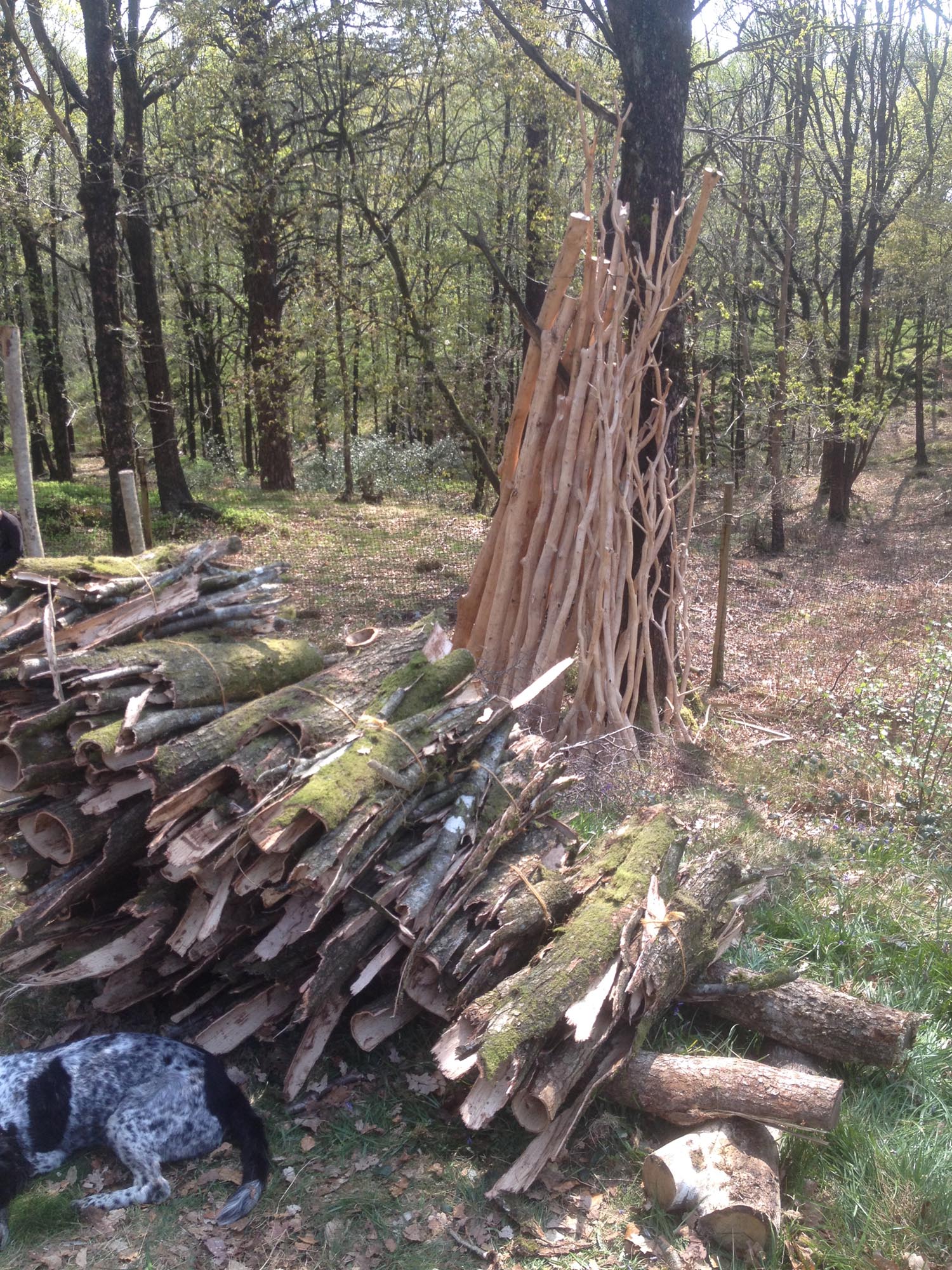
“We had a huge bobbin industry in this area and still supply Stott Park Bobbin Mill – part of English Heritage.” says Oaks when discussing the products made from the harvested oak wood.
Without the dedication and skills of the coppicers there would be no bark for the tanning industry. The Bill Hogarth MBE Memorial Apprenticeship Trust was set up in February 2000 in order to ensure that the coppicing skills of Bill Hogarth were recognised for their full worth and continuity secured by setting up a broad-based apprenticeship scheme.
“Bill was one of the last chaps in this area who learnt from his dad, one of the old timers, when lots of people were coppicing.” says Oaks. “Bill kept going and I got involved in the 1980s. He was generous with his time and we set up the trust in his honour,” she says.
“Bill did loads of oak peeling and he was incredibly quick at it.” Oaks states. Today, work parties go into the woods and ten people turn out as much as Bill did on his own she notes. Optimistically, she says, “there are more people doing it now than when I got involved.”
According to the National Coppice Federation there are currently 21 regional coppice groups across the UK. The area of a woodland that is coppiced is called a ‘coupe’. The Woodland Trust recommends oak is cut on a 15-25 year cycle for firewood and building materials, but the frequency depends on the products required.
Duncan Goulder from The Coppice Coop Ltd., a co-operative coppicing and woodcraft business based in North Lancashire/South Cumbria, supplies firewood, charcoal and produces traditional products from wood sourced from its woodland management work.
“I didn’t realise that there was a small but thriving coppice industry today until I got involved with Coppice Association North West and the Bill Hogarth Memorial Apprenticeship Trust.” says Goulder.
“I’d done a lot of coppicing for wildlife on nature reserves but didn’t know that there was value in the potential products, or how to realise that value.” he says.
The oaks are cut between April and June each year when the sap is rising and the bark comes off easily. Goulder notes at other times it is stuck to the trunk and is too time consuming to be worthwhile.
The lengths taken are called ‘standards’. Goulder usually advises landowners against retaining too many oaks in a coppice as the shade they cast can retard the regrowth to the point that it is no longer economically viable to cut it. If this happens the woodland falls out of management and the rotation is lost.
“It is tragic if this happens as good quality coppice costs nothing to manage as it funds itself for as long as it is cut well and protected from deer and overshading,” he says.
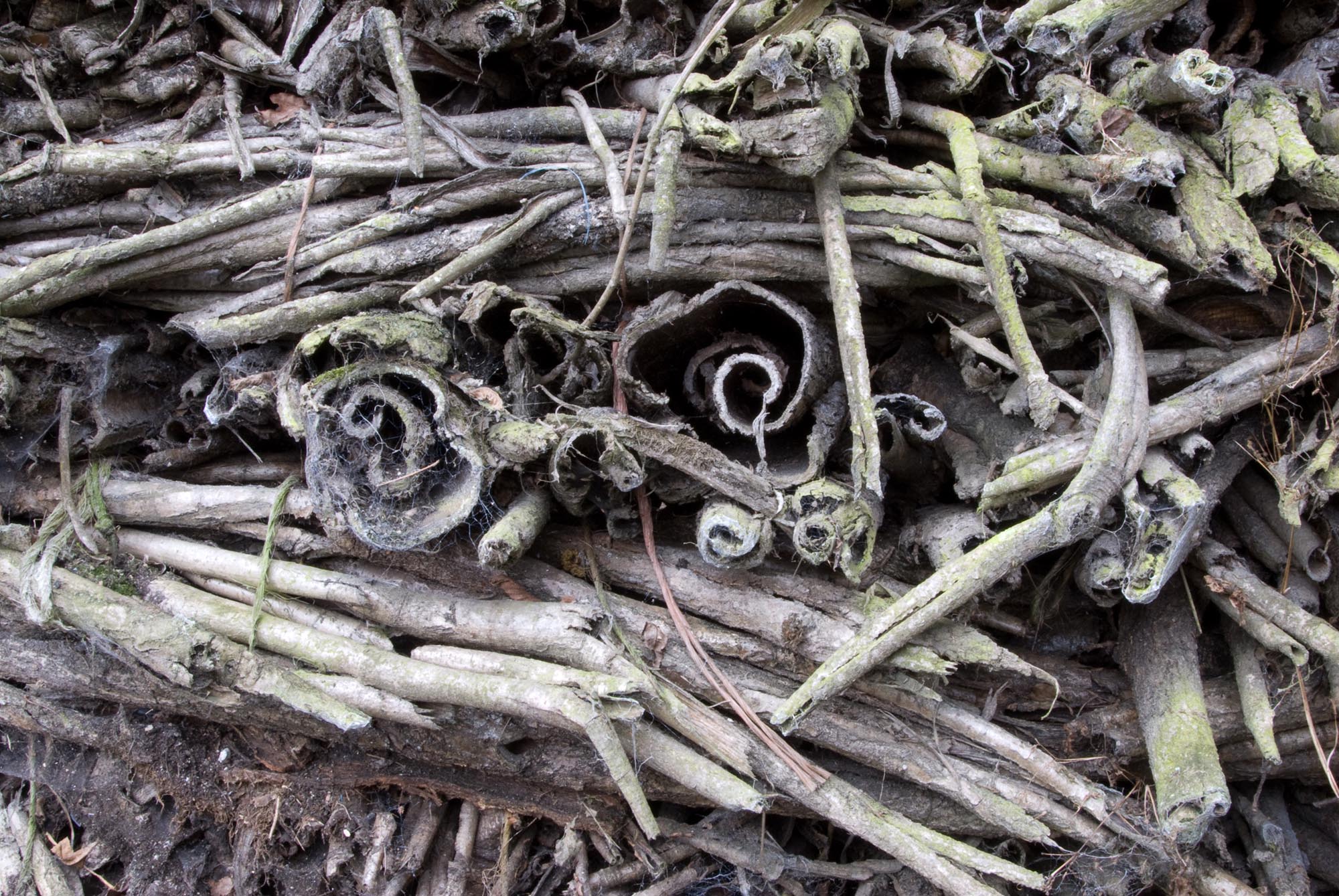
The traditional oak bark peeling tool is called a ‘spud’. Goulder makes his from copper pipe hammered into a flattened spoon shape at one end with a wooden handle fitted into the other. “I have had success fashioning spuds with an axe from a piece of branchwood. You just need something to slide under the bark and lift it off the trunk.” he says.
Owen Jones, based in Ulverston, Cumbria, is a craftsperson specialising in oak swill woven baskets made from coppiced oak. When he first started he was supplied by Bill Hogarth. After Hogarth died, Jones decided to source his own wood and, so, for the last 25 years, has been coppicing oaks in his local Rusland Valley.
“The sap starts to rise in mid-April, before the leaves, just as the buds start swelling. Then, after the trees are felled, the bark just comes off.” says Jones. The length of wood is scored cross ways and the bark detaches from the wood which is left to make his baskets. “It is quite close to extinction as a trade.” he notes.
Jones only needs to work around an acre of woodland a year for the quantity he needs. “You need to protect from deer because they can devastate any new growth.” he says.
The bark is bundled up and left to dry out away from the elements for a few months to a year. Last year, 660kg was produced for the tannery, which collects once a year, usually in September.
Situated in Colyton, in the heart of the Coly Valley, Devon, J. & F.J. Baker & Co. Ltd. is the last oak bark tannery in Britain and continues to run as a family business. The Devonshire site has been a tannery since Roman times with the adjacent River Coly providing a plentiful supply of water. The Baker family bought the tannery over 150 years ago in 1862.
“The oak is used because it was traditionally in abundance here in the UK.” says Elizabeth Celi-Parr, sixth generation of the Baker family. “It is a much slower way and the end result is leather that will last a lifetime.”
Using the oak bark collected from its army of small-scale woodworkers, Baker’s oak bark tannage is a long, gentle process that protects the natural fibres of the hide and doesn’t dry them out as much as some modern tanning methods. It takes a staggering 14 months to produce each piece of leather.
“Each leather will smell of what it has been tanned in. You can tell oak bark leather by the smell. It patinas really nicely and has a nice character to the colour which will develop and really go to a warm brown with time.”
“We store the bark for a year, while it dries out, and have a special grinder driven by our 400 years-old water wheel.” says Celi-Parr. “We grind it up in pieces – 10cm long by 4cm wide – where it is added to water from the River Coly and the bark soaks into the water.”
The water is pumped off and mixed until all the tannings have come out from the bark. “Then the bark is useless. It can be used for gardening or left to biodegrade. If anybody wants some for their garden, they are more than welcome.” she generously says.
The hides stay in the tan yard for 3 months, using the water wheel to gently rock the wooden frames. They subsequently go into stronger pits where they are layered and left for 9 months.
“Each leather will smell of what it has been tanned in. You can tell oak bark leather by the smell.” states Celi-Parr. “It patinas really nicely and has a nice character to the colour which will develop and really go to a warm brown with time.” she says.
Luckily, J. & F.J. Baker & Co. Ltd. got left behind. Many UK tanneries changed production to faster forms of tanning such as vegetable or chroming salts.
“Lots of very good tanneries modified to vegetable tannage because of the speed. We stayed with what we know and are very proud of the leather it produces. It doesn’t jeopardise the strength or properties of the material.” she says.
The oak bark leather is highly sought after. Celi-Parr says J. & F.J. Baker & Co. Ltd. supplies top shoe makers in London and Northampton and luggage makers in France. The leather is heavily used in equestrian products and made into bridles and saddles. It is also a great sole leather for quality leather shoes because it is a harder and longer wearing leather.
Commanding a premium, the oak bark leather is proudly name checked on products by skilled artisans and leather goods companies who fly the flag for the UK leather industry.
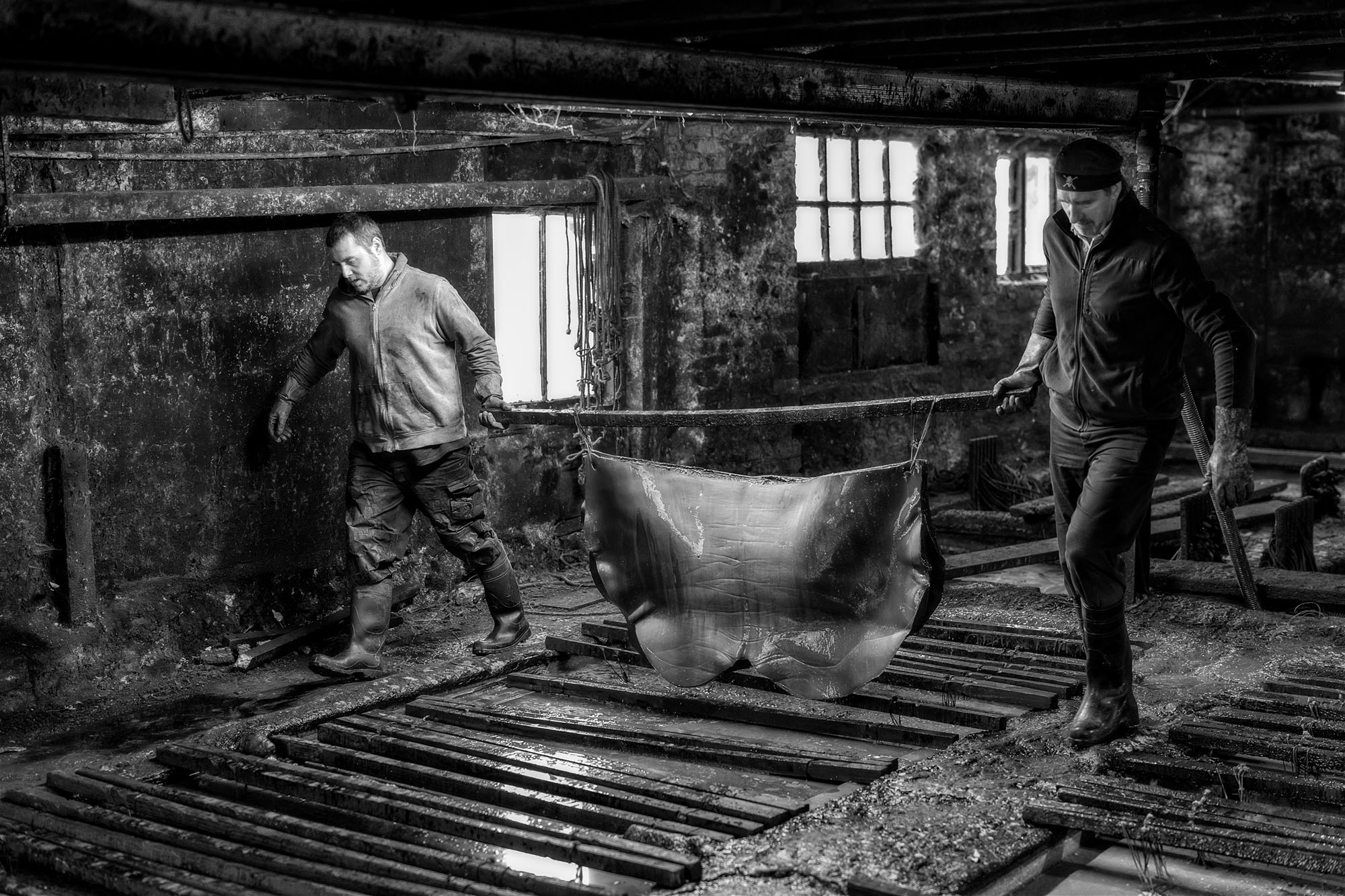
“Finding J. & F.J. Bakers leathers was a real eureka moment for us,” says Melanie Clarihew, Co-Founder of Mackenzie & George. “To find a British tannery producing leather with the same care and attention to detail as us, along with its incredible sustainability record and combination of traditional manufacturing and modern techniques, using this leather felt very aligned with our own brand values.” she says.
Mackenzie & George was launched in 2012 with an aim to create luxury accessories, made in Britain in its Shropshire workshop and available at affordable prices.
Currently, the brand produces one style of belt with oak bark leather – Chester – an everyday belt with solid brass buckle, but they are set to launch a range of its classic best sellers and some other small accessories before Christmas.
“It brings a real depth of tone, character and weight that is unachievable with the rest of our Italian vegetable tanned leathers.” says Clarihew. “It’s incredibly thick, so sewing is tricky – it’s broken a fair few needles. But it’s also extremely resilient and has a very unique smell.” she says.
Clarihew says the leather is worth the premium price tag and nine in ten of her customers are drawn to the oak bark. “Once we talk about the story of the tannage and then being made by us, most customers really understand it and love it.” she says.
Tim Hardy has been working with oak bark leather for over 40 years. He creates bespoke, made-to-order handmade leather belts and leather goods all hand stitched in his Worcestershire workshop.
“It’s the real deal. It’s very honest, all done so traditionally, where as a lot of leathers are corrected, sprayed and messed about with.” says Hardy.
“It gets better and better.” he says. “It will darken with age and take on its own really nice patina. As it gets old, it’s bit like a fine wine. If you find a belt from a grandfather or great grandfather, it’s what they would have used.”
Hardy says many of his customers have fallen in love with the oak bark leather because of the heritage, quality and durability.
“Because it goes back so long, and look at that family, the last one to survive in this country, inspires me and the belts I design,” he says. “It gives them a feel of old trades and the reasons the belts are named ‘Farrier,’ “Drayman’ and ‘Casemaker’”
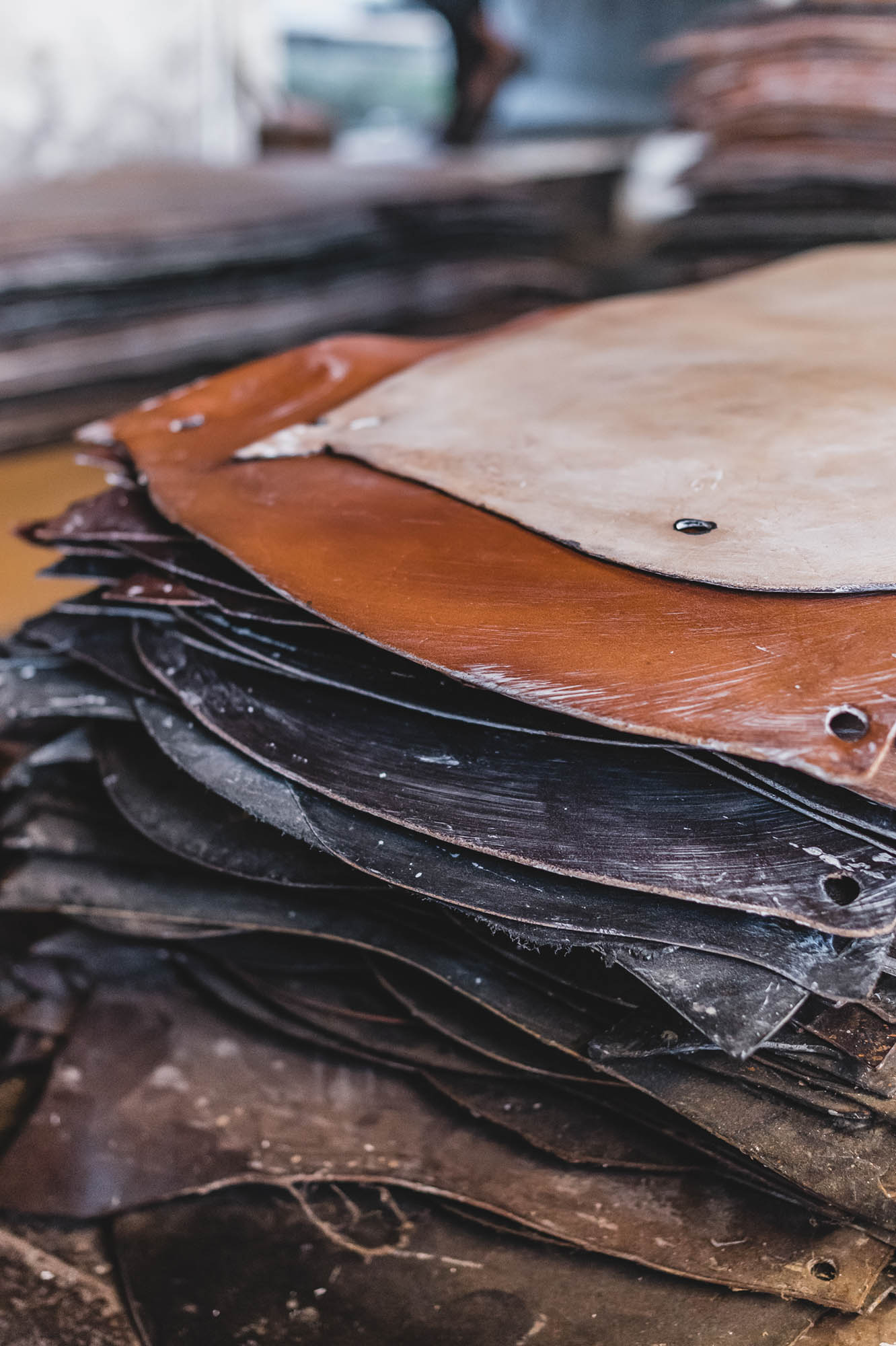
Supporting a fellow British maker, Fox Brothers & Co is a clothmaker based in Wellington, Somerset. Its retail arm The Merchant Fox uses J. & F.J. Baker & Co. Ltd. leather in its range of belts satchel bags.
“Our loyal customers have often commented on the beauty of the oak barked leather ageing process. They appreciate all the hard work and dedication involved when creating oak barked leather accessories, and enjoy owning something that has such a history within traditional craftsmanship.” The Merchant Fox manager states.
“As we continue to grow and develop our accessories collection, we would strongly consider oak bark tanned leather for future pieces,” they say.
Oak bark tanned leather remains a constant connection to the ancient past and offers a romantic vision of pre-industrial Britain. The by-product bark continues to support a wealth of UK small scale industries from traditional woodworking and forestry management through to tanning and leatherworkers while consumers have the opportunity to experience the finest of natural materials and tangible products all rooted by the mighty English oak.
READ MORE

Best Foot Forward
Buy less. Buy better. Buy local. Buy British. The now-familiar slogans of the advocates of sustainability in fashion are old news in Northamptonshire. In the home of classic English shoemakers family-owned firms that do things in the old-fashioned way enjoy a worldwide reputation, as Eric Musgrave reports.
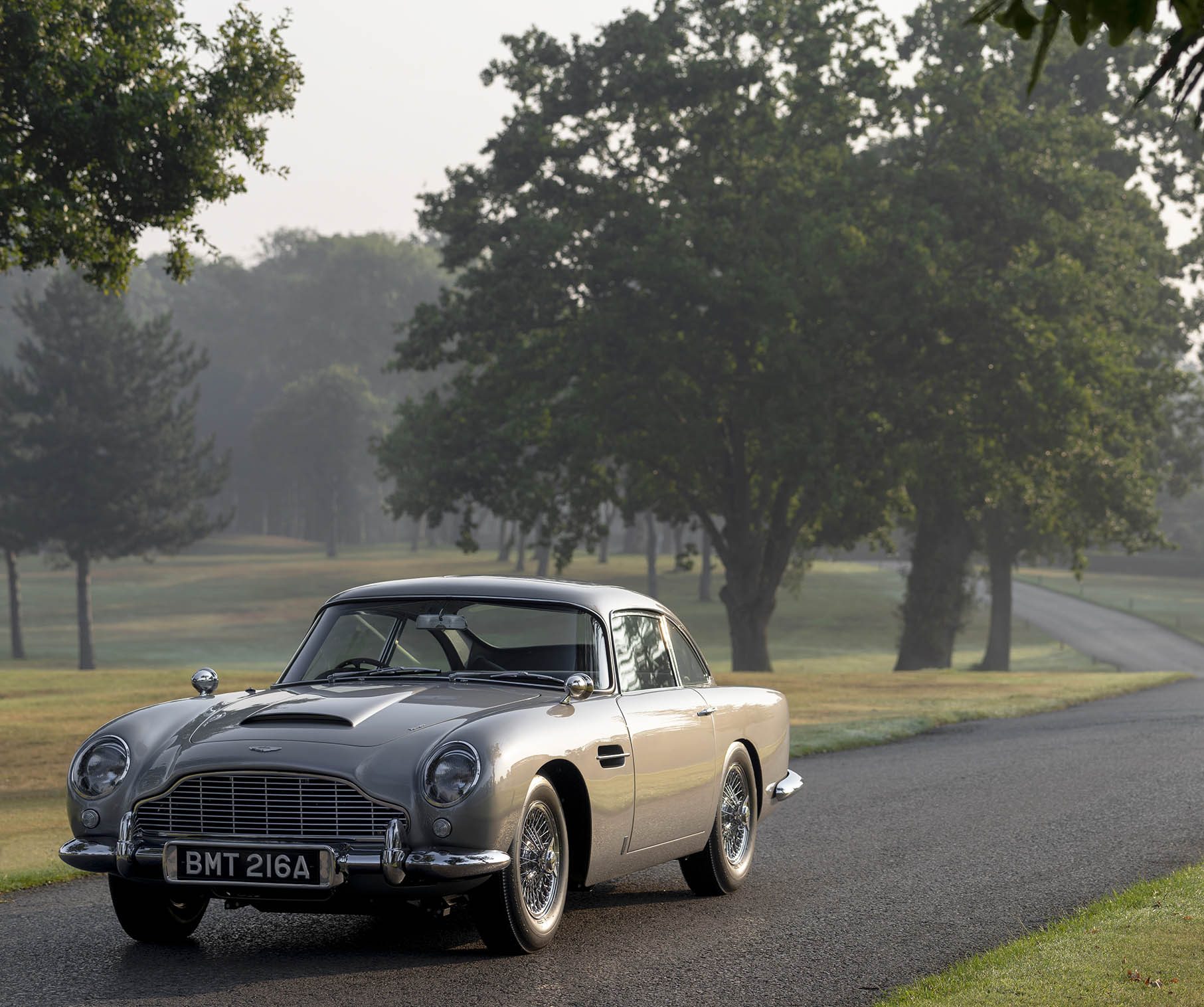
Behind the Wheel
Cars and leather have gone together since the birth of the automobile and, though the industry is pivoting towards electric vehicles, it remains convinced of the sustainability, luxury, and durability of genuine hide interiors.
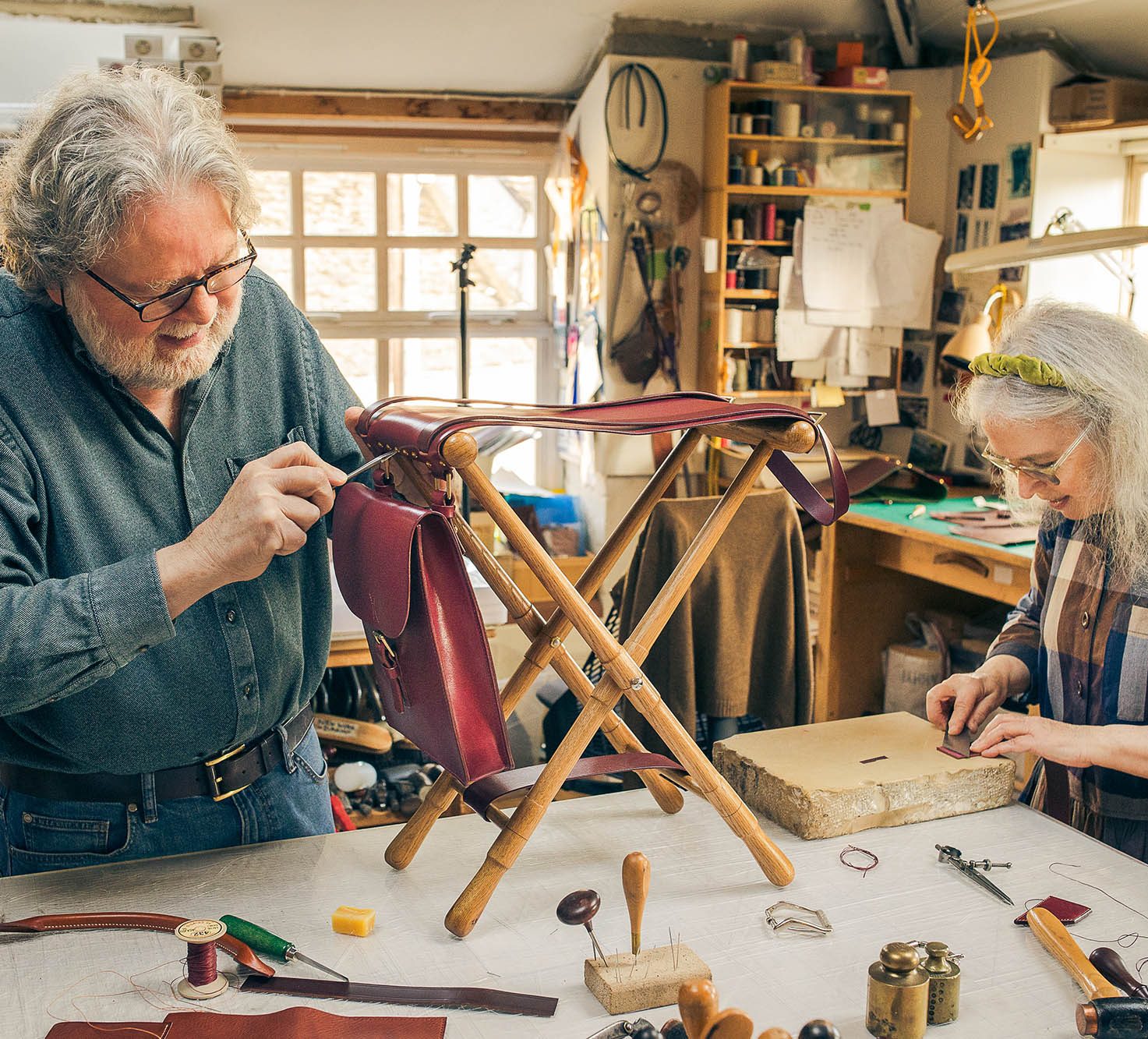
The Educators
Meet the leatherworkers helping to give the UK its competitive and creative edge by passing on traditional leather craft skills.